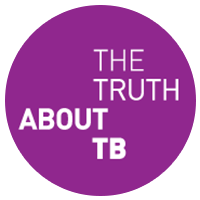If your GP suspects you may have TB, they will send you for testing. If you do have TB, it’s best to know as soon as possible. Delaying treatment makes it more likely you may develop long-term health problems and could put people close to you at risk.
Types of TB test
There are a range of tests to show if you have TB, such as a sputum test, a culture test and x-rays.
Chest x-ray
A chest x-ray can show damage in your lungs, but you might need further tests to prove you have TB, such as sputum and culture tests or scans.
Testing sputum
A lab will use a microscope to look at any sputum (phlegm) that you cough up. If there are TB germs in your sputum, you have tuberculosis of the lungs or throat (pulmonary TB). This test also helps doctors to understand how infectious you may be.
Biopsy
If it is thought that you have TB, but not in your lungs or throat, the doctor may take a biopsy to test for TB. This is a small sample of tissue or fluid taken from the area where the TB is thought to be.
Culture test
This test uses your sputum or tissue sample to grow any TB bacteria that may be there. It tells doctors how infectious you are and also whether your TB is resistant to any antibiotics. This helps ensure they put you on a combination of drugs that will cure you. As TB culture grows slowly, it may take up to eight weeks to get some of the results.
Testing for latent TB
If you are being tested for latent TB, there are two types of test you may be given:
TB skin test
A skin test (also called a Mantoux test) is an injection of a tiny amount of tuberculin extract under the skin of your forearm. If you have been exposed to TB bacteria in the past, your skin can become raised and red, which can mean a positive result. It’s not generally painful but could be itchy. You can also get a positive result if you have had the TB vaccine (called the BCG).
IGRA test
Interferon-Gamma Release Assay (IGRA) is a blood test that can diagnose latent TB by looking at the immune system cells in the blood.
It is likely you will also need a chest x-ray and assessment by a doctor or specialist nurse.
Testing before the BCG vaccination
Before getting the BCG vaccination, people are given a skin test (also called a Mantoux test). This an injection of a tiny amount of tuberculin extract under the skin of your forearm. If the test is negative you may be given BCG in the next three months.

